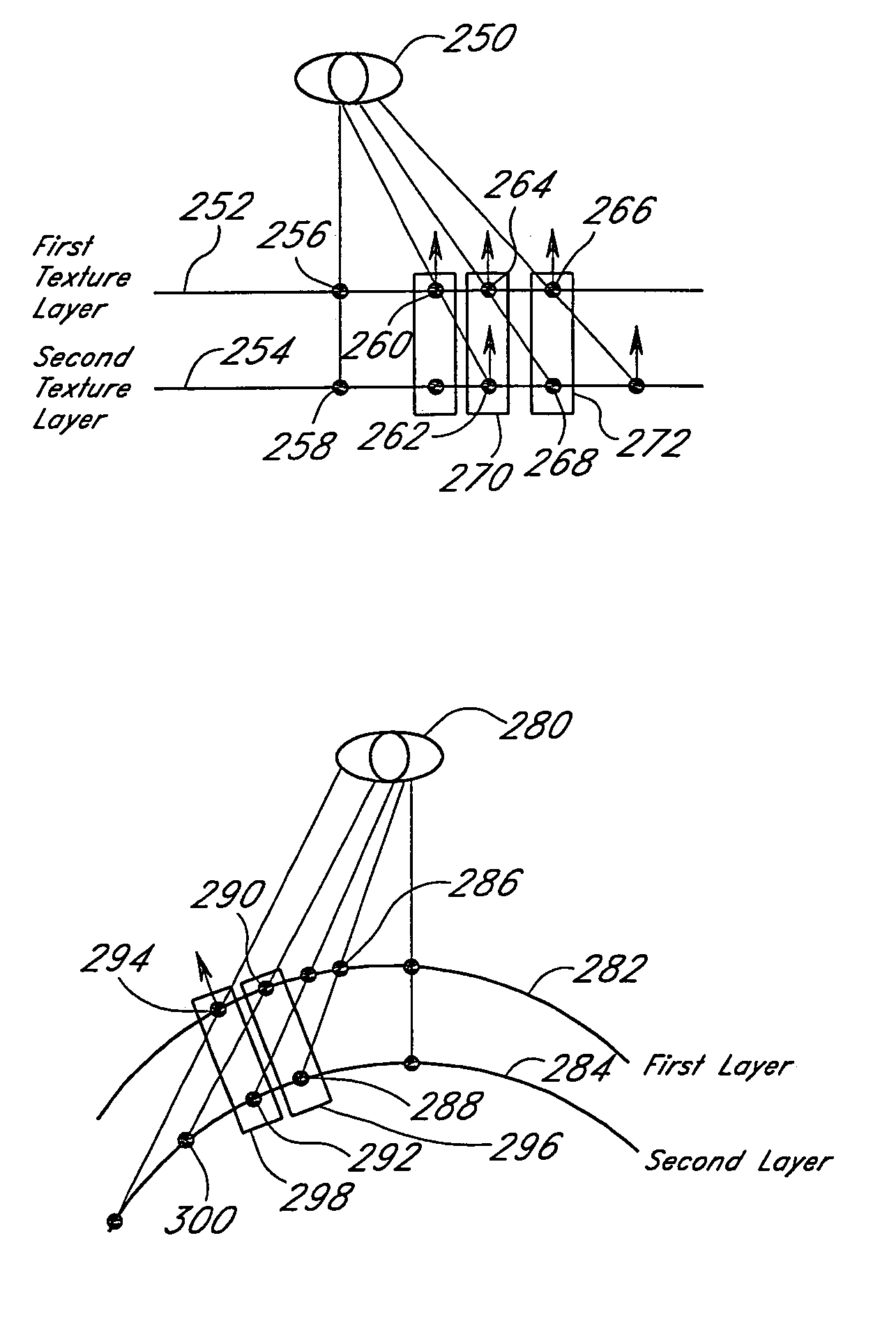Method and system for texturing
a texturing and method technology, applied in the field of graphics generation, can solve the problems of inability to account for surface thickness of existing texture-rendering techniques, and inability to accurately render a semi-opaque surface, etc., to avoid the inconvenience and delay of memory page swapping
- Summary
- Abstract
- Description
- Claims
- Application Information
AI Technical Summary
Benefits of technology
Problems solved by technology
Method used
Image
Examples
Embodiment Construction
[0030]FIG. 1A illustrates a first eye point position 100 above a plurality of texture layers comprising a first texture layer 102, a second texture layer 104, a third texture layer 106, and a fourth texture layer 108. Each texture layer 102, 104, 106, 108 comprises a texture map with all of its associated MIP (multum in parvo) maps. Texture mapping is described in “Computer Graphics Principles and Practice” by James D. Foley et al., 1997, on pages 741–744, and “Introductive Computer Graphics, A top-down approach with OpenGL” by Edward Angel, 1997, pages 389–397, which are hereby incorporated by reference in their entirety. MIP mapping is described on pages 826–828 of “Computer Graphics Principles and Practice.”
[0031]Each texture map comprises a plurality of texels. FIG. 1A illustrates a first texel 110 in the first texture layer 102, a second texel 112 in the second texture layer 104, a third texel 114 in the third texture layer 106 and a fourth texel 116 in a fourth texel layer 108...
PUM
 Login to View More
Login to View More Abstract
Description
Claims
Application Information
 Login to View More
Login to View More - R&D
- Intellectual Property
- Life Sciences
- Materials
- Tech Scout
- Unparalleled Data Quality
- Higher Quality Content
- 60% Fewer Hallucinations
Browse by: Latest US Patents, China's latest patents, Technical Efficacy Thesaurus, Application Domain, Technology Topic, Popular Technical Reports.
© 2025 PatSnap. All rights reserved.Legal|Privacy policy|Modern Slavery Act Transparency Statement|Sitemap|About US| Contact US: help@patsnap.com



